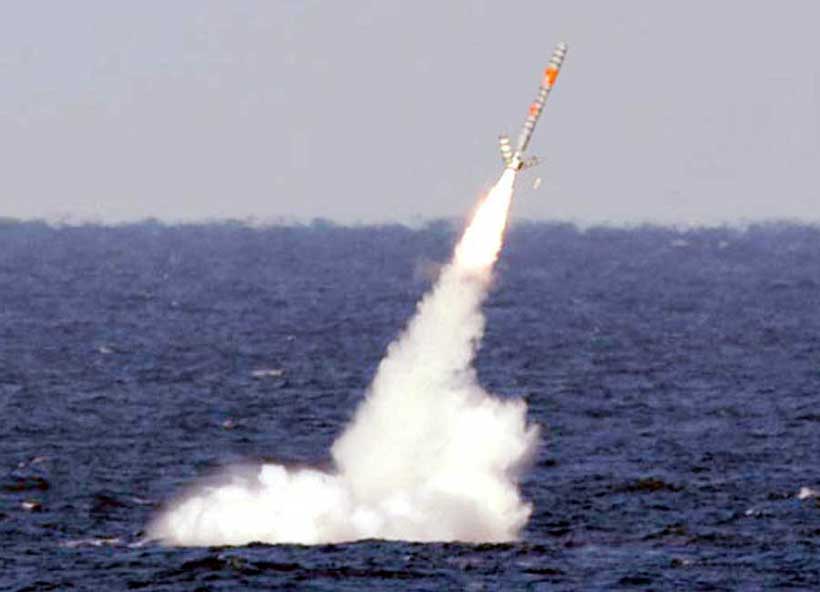The debate between nuclear haves and have-nots over safety and security of nuclear material has long been dominated by the evolving discourse on futuristic scenarios particularly the nuclear use in a conflict. Consequently, scholars have been divided into two broader categories; nuclear optimists and nuclear pessimists. Nuclear optimists strongly believe in the deterrence capability of nuclear weapons, which diminishes the conventional power among states. Whereas, nuclear pessimists fear of nuclear war and inadvertent use of nuclear weapon in a conflict.
In this regard, South Asia is termed as one of the volatile regions of the world, where nuclear brinkmanship is probable because of the longstanding historical animosity between India and Pakistan. The onus of instability and volatility in the region rests with India’s inspiration for regional hegemon, which seeks domination through coercion and use of power. Its ambitions to join global cartels such as Nuclear Suppliers Group (NSG) without meeting the criteria is self-explanatory of its coercive yet illegitimate policies.
The irresponsible behavior of India as a nuclear power in pursuit of prestige is more fearsome than the threat of nuclear war.
One of the best examples of irresponsible Indian behavior was misuse of Canadian nuclear power reactor CIRUS. The reactor was given to India for research and development, instead Indian government used that material for making weapons of mass destruction. This Indian decision changed the South Asian security environment for worse and permanently effected the strategic stability. India has never demonstrated acknowledgement of international nonproliferation and disarmament regimes.
India is not a signatory to the Treaty on the Non-Proliferation of Nuclear Weapons (NPT) or Comprehensive Nuclear-Test-Ban Treaty (CTBT) and in fact the main conflict in ratification of Fissile Material Cut-off Treaty (FMCT) is Indian stockpile of material that would be used for military purposes. Before 1998, only China was a nuclear power posing no threat to any neighboring country, but Indian nuclearization poses threat to not only China and Pakistan, but also to other regional states. For instance, Indian deployment of Agni series missile targeting strategic locations in Sri Lanka. Though India had denied any such claims, but the purpose was to threat Sri Lanka to refrain from friendly relations with China or Pakistan.
Ever since India tested nuclear weapons, it has proliferated vertically and now it has the fastest growing nuclear weapons program. India is building a largest covertmilitary complex for nuclear centrifuges, atomic-research laboratories and development of thermonuclear weapons. Another research carried out by Belfer Centre for Science and International Affairs suggests that India can produce over 2,600 weapons, while Pakistan can only produce 207. There are reports not just by international scholars but also from domestic Indian scholars. For instance, Dr R. Rajaraman, an Indian nuclear physicist at JNU expressed that “India does possess around two tones of reactor grade plutonium which can make between 300-400 nuclear bombs”.
Over a decade now India is ranked as the world’s largest importer of arms, which includes both conventional and strategic weaponry. Besides, India not only misused nuclear technology but also the space technology provided for peaceful exploration. Indian ballistic missile program is the by product of Western space cooperation and it tested 22 variant missiles in 2018, making its missiles program also the fastest growing in the world. For instance, K Jayaraman, the director of India’s Defense Research and Development Laboratory (DRDL) revealed that India is planning to increase missile production capacity rate to 100 per month and is currently producing 50-60 indigenously-developed missiles.
Indian proliferation record is not only confined to nuclear technology, but also to weaponization of space domain. With the test of ASAT missile, India has initiated a new global arms race, which eventually will result in Indian claims to carry nuclear warhead in space. Indian DRDO chief has recently termed the tested missile a direct-ascent, kinetic kill weapon and further highlighted military dimension of Western aided Indian space program that the country is working on number of killer technologies, for instance, directed energy weapons (DEWs), lasers, electromagnetic pulse (EMP) and co-orbital killer weapons.
Indian attempt to test ASAT missile in outer space, further undermine nuclear nonproliferation and disarmament policies and its credibility to enter NSG.
Therefore, Indian signaling is clear that it will use any kind of advanced technology provided for peaceful purposes and will violate any international law for nuclear, space and missiles program to exercise hegemony in the region. Giving India’s entry into international cartels without any insurance will result in further deteriorating security situation of South Asia. South Asian region holds the potential for economic development through Chinese economic initiatives. Pakistan intends to benefit from economic progress associated with trade route projects. India instead of militarizing and threatening strategic stability must join hands with China and Pakistan.


